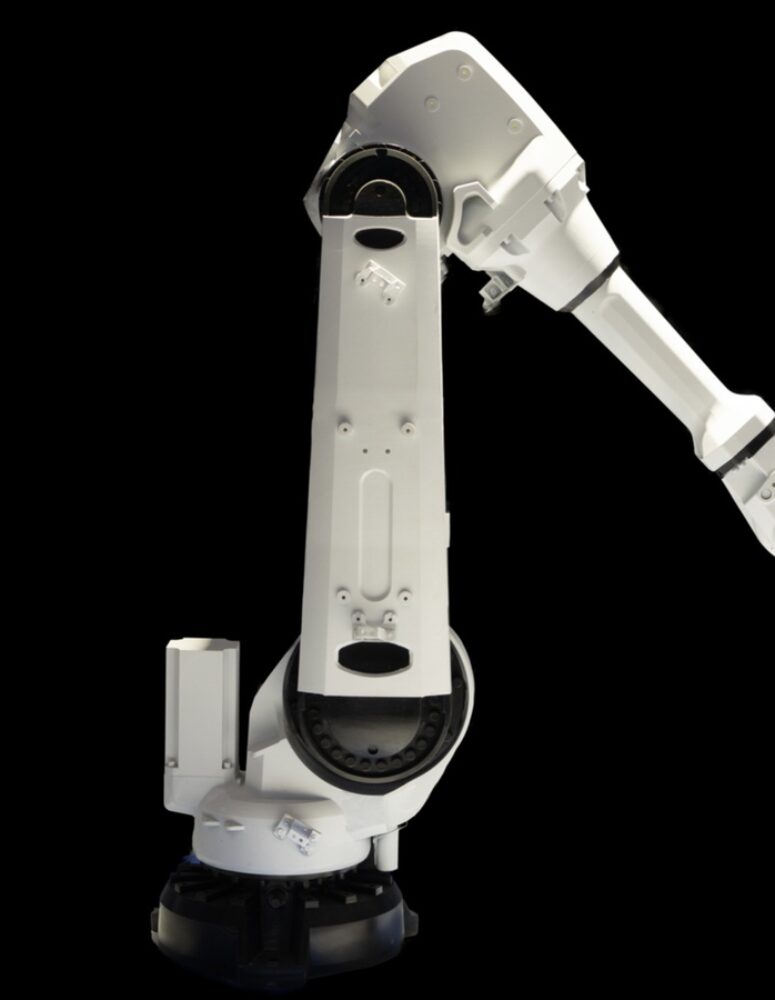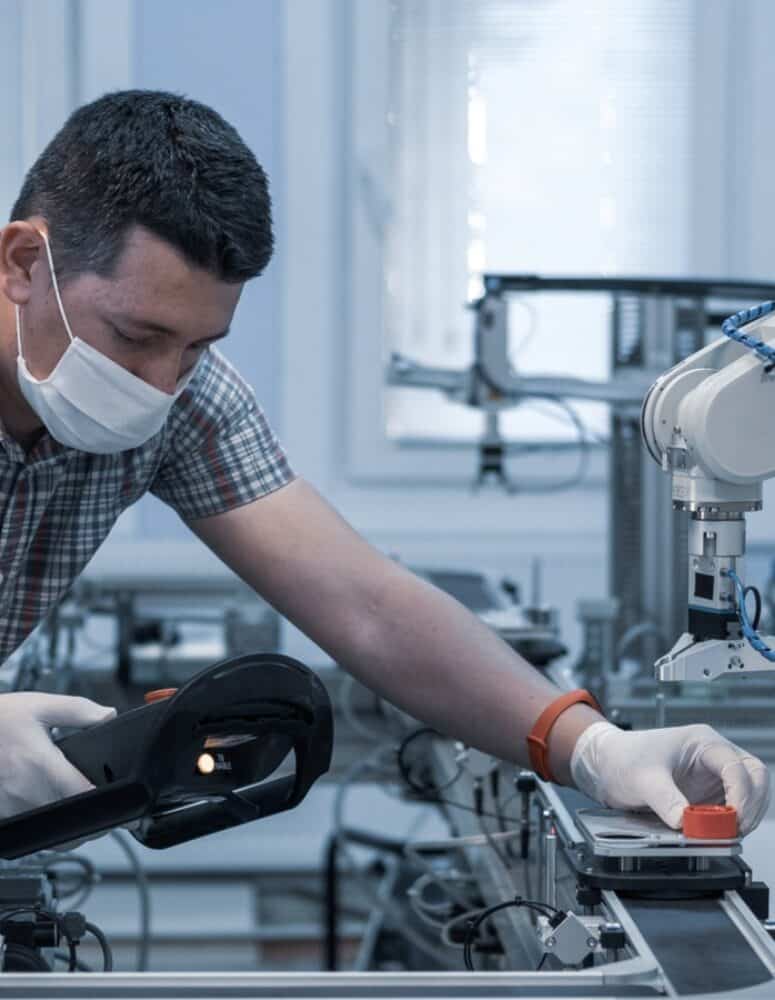Why Women’s Voices in Manufacturing Matter

What do women in manufacturing think about the business they’re in? It’s not something we hear a great deal about, which is perhaps not surprising. Manufacturing is a male-dominated industry, after all. For half a century women have represented around 30% of the U.S. manufacturing workforce, peaking at 33% in 1990, according to the U.S. Census Bureau (USCB).
By number, most female employees are found in production, transportation, and material moving. They are assemblers and fabricators, says the USCB, inspectors and testers, among other roles.
But, proportionately, women enjoy far greater representation in the sales and office-based roles of manufacturing companies, where they are in the majority, holding 51.7% of the roles.
So it’s important to know what they think. Earlier this year we surveyed over 500 manufacturing professionals from a range of industries, including aerospace and defense, automotive, space, electric vehicles, autonomous vehicles, to understand the challenges associated with product-related communication and knowledge transfer.
In line with the USCB data, female employees accounted for 28% of responses. And while we did not set out to measure gender distribution across industries (and so, offer no conclusive insight) there was some interesting variation by sector. For example, women accounted for just 21% of responses in the aerospace and defense sector while in the emerging SpaceTech sector they accounted for 35%, and in the automotive sector 32%.
When it comes to existing product communication workflows – the ways in which documentation describing products and processes is created, shared, and consumed – the data was clear: 71% of female employees believe there is room for improvement in these workflows, and the same proportion believe documentation challenges at their organization are getting harder to manage as the company grows. Ninety-seven percent of female respondents said they had seen products or projects hit by errors or delays as a result of documentation being late, inaccurate or unclear, or outdated.
Digging further into specific elements of the workflows, and perhaps indicating areas where female employees may have greater insight, women were more acutely concerned about bottlenecks associated with the creation of product documentation than their male counterparts. Sixty-five percent of female respondents reported that creation bottlenecks are a frequent problem at their organization compared to just 51% of male respondents.
They also felt more strongly that managing distribution of, and access to, important documentation was a problem, with 43% of women saying this was difficult for their organization to manage, compared to 36% of male respondents.
With documentation creation and consumption routinely involving collaboration between separate departments, we asked respondents how well different disciplines such as engineering and marketing professionals were able to collaborate. Here, female respondents were perhaps more optimistic than their male counterparts, with 30% saying there were no difficulties, compared to only 20% for male respondents.
In terms of the outcomes of these workflow challenges, women again registered somewhat higher levels of concern than men. Forty percent of female respondents said they had witnessed wastage through product defects as a result of product documentation being delayed, inaccurate or unclear, or outdated, compared to 38% of male respondents. And 38% of women said the same problems had led to delayed or missed sales opportunities, compared to 32% of male respondents; interesting considering the USCB data which showed higher numbers of female workers in manufacturing sales roles.
Perhaps more worryingly, one in three female manufacturing employees believe their organization is not actively seeking ways to improve documentation workflows and processes, which suggests a huge opportunity for improvement if the problems these women are identifying can be highlighted and understood at the leadership level.
So what does success look like for women in manufacturing? Well, with 37% of female respondents saying the applications used in documentation workflows are unsuited to the task, 33% saying there are too many applications involved, and 39% saying there are too many people involved, the data suggests women want to see more autonomy and efficiency in these crucial knowledge transfer workflows.
More than 2 in 3 of female respondents said it would be beneficial to use a single application for the creation of all types of product content, while 62% said it would be beneficial if all collaboration were also to happen in one application channel. Meanwhile, 66% said they believed it would be beneficial if the company was able to track and measure document access and usage.
As in any sector, women have an important role to play in manufacturing and it is essential we understand their perspective on the challenges companies face. A clear takeaway from this research is that female employees believe the manufacturing industry faces a defining challenge when it comes to poor communication and product documentation, which is intricately connected to the success of the entire organization. And when the processes in place break down, the result is self-inflicted damage that could – and should – have been avoided.
 About the author:
About the author:
Patricia Hume is Chief Executive Officer of Canvas GFX.
Manufacturers Keep Pace with Technology Deployment
Get the Latest News
Get involved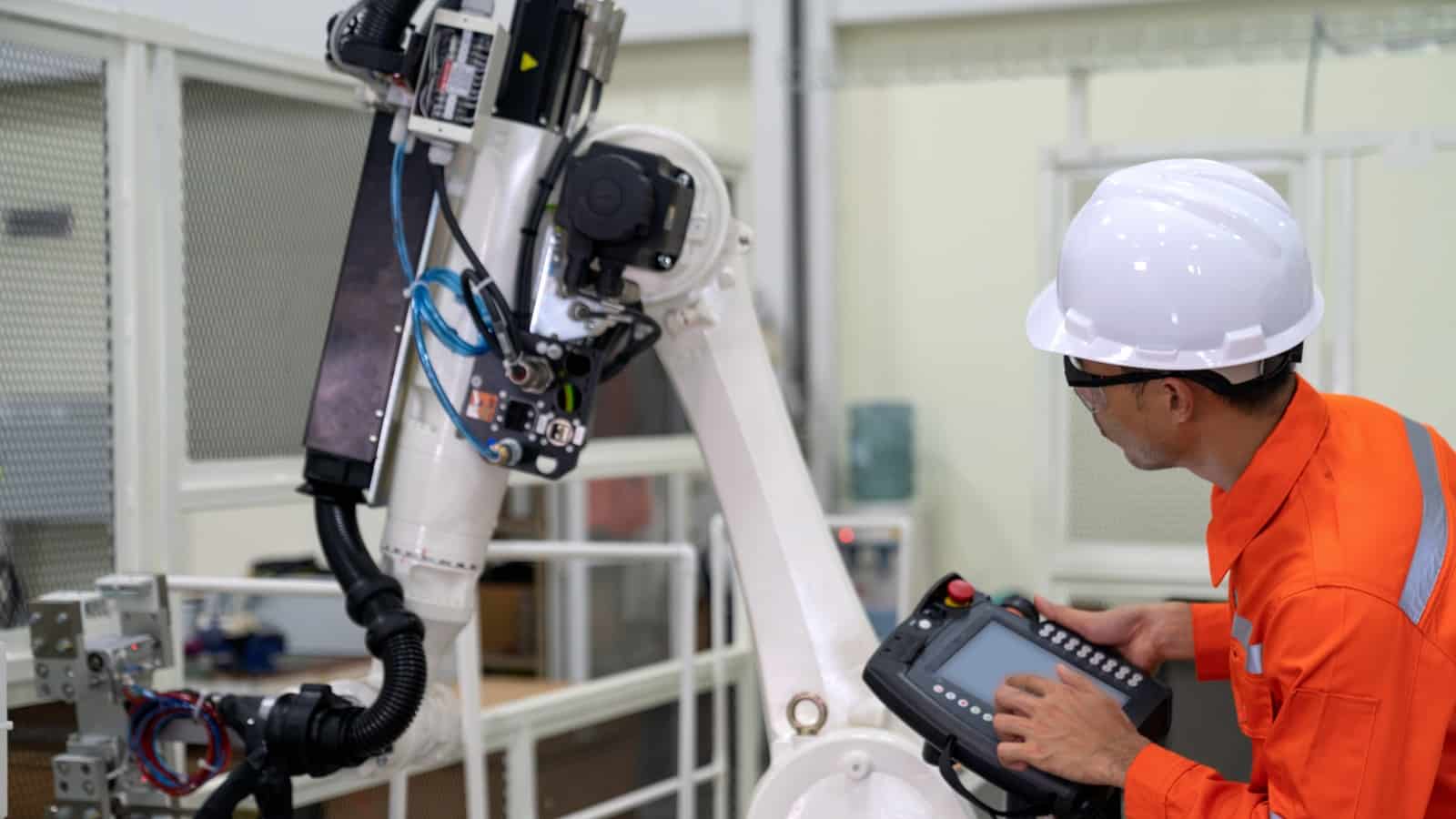
Manufacturers are staying on top of the tech game.
That was among the chief findings of a new polling conducted by the Manufacturing Leadership Council, the NAM’s digital transformation division. The annual Transformative Technologies in Manufacturing research survey aims to reveal data on current realities and expectations for manufacturing in the near future and in the years to come.
Rate of adoption: The most surprising data point was that 89% of respondents said they expect their company’s rate of adoption of disruptive technologies to increase over the next two years. That figure is up from 51% just one year ago.
Why disruptive technology? Reducing costs and improving operational efficiency were the most-cited reasons for investing in digital tech, with 83% of respondents identifying these as important motivations.
- Improving operational visibility and responsiveness came in second, at 61%.
- Other reasons include increasing digitization (40%), creating a competitive advantage (36%) and improving quality (30%).
Top near-future trends: Digital-twin modeling and simulation software, augmented and virtual reality, high-performance computing and further investments in supply chain management software will lead the next wave of investments during the coming year or two.
Not of interest: The survey found that quantum computing and blockchain technology are currently of the least interest to manufacturers.
The role of AI and ML: Artificial intelligence and machine learning usage continues to grow among manufacturers.
- Nearly 50% of respondents indicated that their companies have implemented AI, either on a single-project basis (40%) or in all factories (9%).
- About 75% said they are applying AI and ML to reduce costs and improve productivity and processes.
- Approximately 60% indicated they had used AI and ML for preventative/predictive maintenance or quality improvement.
Misunderstood metaverse: A new topic covered by this year’s survey, the manufacturing metaverse, was perhaps the least understood by respondents.
- About 38% said they were still trying to understand the technology and concept, 20% said they have no plans to adopt a manufacturing metaverse approach and 15% said they didn’t know how to respond to the question.
The last word: “Manufacturers are finding more use cases and business benefits for increasing their use of digital technology, and the pace of adoption is accelerating,” said MLC Co-Founder and Vice President and Executive Director David R. Brousell.
- “The research confirms that manufacturing is headed for an agile, connected and collaborative future driven by technology and fueled by innovation.”
Imagining an Industrial 5G Future at Ericsson
Members of the Manufacturing Leadership Council were given a glimpse of the future of factory connectivity at the Ericsson USA 5G Smart Factory in Lewisville, Texas and Imagine Studio Tour in Plano, Texas. Exploring the theme Effectively Managing 5G and IoT to Drive Smart Manufacturing, tour participants learned about a highly autonomous and sustainable operation that manufactures Ericsson’s portfolio of 5G products, including advanced antenna radios.
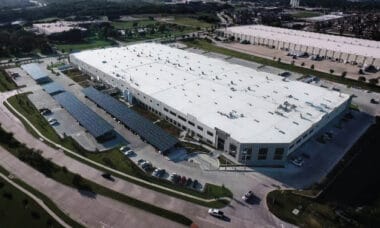
The Lewisville facility was recognized as both a Global Lighthouse and Sustainability Lighthouse by the World Economic Forum, just one of six factories worldwide to win both designations. The Smart Factory has more than 400 employees from 36 different countries.
5G is hailed for its promise in industrial settings due to its low latency and high reliability. It is considered critical infrastructure by the federal government, meaning it is considered so vital that it is designated for special protections and falls under national policy for maintaining its security, resiliency, and function. Additionally, an industrial 5G network requires fewer wires and fewer access points vs. advanced wifi networks. For example: In an 80,000-square foot area of the production facility, just two 5G radios are required for the network. The same connectivity on wifi would require 24 routers.
The plant utilizes automation, interconnected equipment, machine learning and real-time data enabled by IoT solutions and a private 5G network. Constructed in 2019, the facility was built in less than 180 days and delivered its first commercial 5G radio in July 2020. It produces a range of 5G radios for private networks and deployment by cellular carriers for their nationwide networks.
The surface mount assembly lines at the Ericsson USA factory are the longest in the United States at 271.6 feet. The factory layout can be described as a hub-and-spoke assembly system connected with automated mobile robots (AMRs). The equipment includes AMR docks, which allows the AMRs to move components through various stages of assembly. This allows operators to stay focused on production vs. tracking down necessary components.
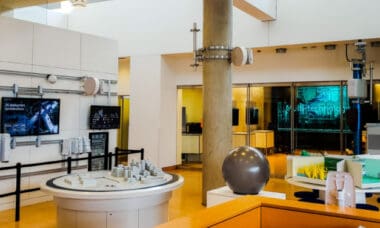
The manufacturing team at Ericsson says they are focused on “sensible automation” as not everything makes sense to fully automate – for example, final assembly is done with human operators working with collaborative robots. In other areas where it is practical, faster and more efficient industrial robots are deployed instead. The plant runs on a private network separate from Ericsson’s corporate network, and all of its network solutions are hosted on-premises.
On the sustainability front, Ericsson is reaching for an ambitious Net Zero goal in all of its operations by 2030, with a goal of being Net Zero in its entire value chain by 2040. The Ericsson USA factory is 24% more energy efficient vs. comparable buildings, using renewable energy through 1,646 solar panels that generate 17% of the energy required for the factory. All of the energy the facility uses is from either wind or solar sources. It also has two 40,000-gallon tanks for collecting rainwater, which is used for maintaining its drought-resistant, native species landscape and in the facility’s restrooms.
After touring the production facility, attendees were taken to Ericsson’s Imagine Studio where they were given a deep dive into the performance differences between 5G and other previous generation wireless networks, the considerations necessary when planning for 4G/5G connectivity needs, an overview of private cellular networks, and identifying top 4G/5G-enabled use cases for the factory. Topics of discussion included how to align business goals with network deployment, how to select partners and system integrators, understanding risks, and how advanced networks can be deployed on both new and legacy production lines.
As for its future goals, the Ericsson team says that while product variability is currently a challenge from an automation perspective, they aim to control production with AI and machine learning for even greater autonomous operations; 5G will be a crucial component to handling the variability. They describe the process of adjusting their highly automated operations as a journey that is about learning as a team with production, network engineering, and product development. They are also actively pursuing a production digital twin.
Ericsson’s M4.0 philosophy would be good for any manufacturer to emulate: Continuously try new things and evaluate them. Be willing to fail. Aggressively chase production efficiency. Envision the type of company culture that is necessary to be innovative and to meet business goals. And most of all, imagine what is possible and set that as the highest goal.
See the full lineup of MLC’s upcoming plant tours at https://www.manufacturingleadershipcouncil.com/event/plant-tours/.
Digital Solutions Drive Sustainability in Manufacturing
It’s an interesting parallel: the global drive toward sustainability may directly improve carbon emissions and help slow climate change to the benefit of all. And correspondingly, manufacturing companies that successfully transform to contribute to global sustainability will positively enhance their own ability to thrive.
The reverse, of course, is also true — manufacturing companies that fail to meet global environmental, social and governance (ESG) benchmarks will likely find themselves falling behind competitors, being shunned by consumers and, ultimately, facing irrelevance.
It’s a stark reality and a daunting task. Manufacturers must successfully digitally transform in ways that enhance sustainability. But the potential benefits of that success are virtually unlimited.
The digital transformation question is no longer a question
A couple of decades ago, a discussion about digital transformation and sustainability in manufacturing might have involved a number of participants advocating both for and against the need for change — or at least how much things would really need to change. But now, driven by tightening regulations, pressures from global markets, the increased focus on ESG metrics and shifting customer preferences, digital innovation is no longer optional — and manufacturers know it.
According to a recent survey conducted by IndustryWeek and Hitachi, 99% of manufacturing executives consider their company to be committed to sustainability initiatives when compared to others in their industry.
Manufacturers are also beginning to recognize that the benefits of success in this transformation extend beyond the primary goals of operational efficiency, increased profitability, and productivity and safety improvements. Respondents to the survey also noted the potential for significant improvements in:
- Market share
- Influence on industry and society
- Ability to attract new talent
- Brand recognition and reputation
- Employee retention and morale
But knowing you need to transform and knowing how to do it are two different things. Most manufacturing companies are aware of the need to digitally transform, and they know that the changes involved will be substantial. These top three areas of focus emerged in the survey as the most important for meeting sustainability goals:
- Production processes. Streamlined processes that save energy, reduce waste and increase visibility all contribute to making factories more sustainable.
- Workforce training. Manufacturers can maintain and improve sustainability-based work practices and smart-work behaviors by using digital information-sharing tools to reduce the knowledge drain as skilled workers retire.
- Supply chain. More efficient supply chains can save energy, reduce warehouse storage needs and streamline logistics to reduce truck rolls — all of which help lower carbon footprints.
For enhanced sustainability, manufacturers must pursue ways to improve efficiency, lower their energy usage, integrate alternative sources and energy management systems, and lower their carbon footprint from end to end.
And it all starts with knowing where you are today.

Sustainability in manufacturing is built upon a foundation of data
Manufacturers that are exploring digital transformation initiatives know that data will form a large part of the answer to the sustainability challenge. In fact, the survey respondents consider data analytics the most important technology for managing sustainability, with a primary focus on machine learning and artificial intelligence (AI).
Unprecedented quantities of data are now available to organizations, but deriving insights from that data quickly and efficiently requires digitalization. Digital technologies that leverage that data into operational benefits and enhanced efficiencies are the key to enabling quantum improvements in manufacturing sustainability.
Leading manufacturing sustainability by example
Hitachi is a leader in providing sustainable solutions for manufacturing, having developed and operationalized many of the cutting-edge digital technologies that companies use to meet their ESG goals. For example, Lumada Manufacturing Insights helps manufacturers such as Logan Aluminum develop data-driven operations, increase supply chain visibility, run predictive models and enable smart factory solutions that use data to drive productivity, lower asset downtime, extend remaining useful life, and promote sustainability in manufacturing processes.
Hitachi is also one of the largest manufacturing companies on the planet. Its global presence in both manufacturing and technology uniquely positions it as a leader in sustainability solutions. Many technology companies offer recommendations for bolstering manufacturing sustainability, but Hitachi offers advisory services, hands-on guidance, domain and business process expertise, and more — all delivered and backed up with hundreds of use cases and successful delivery examples. Hitachi’s Omika Works factory, for example, was recognized by the World Economic Forum in 2020 as an advanced Fourth Industrial Revolution Lighthouse, an honor given to factories that are world leaders in the adoption and integration of groundbreaking technologies.
But the bottom line is Hitachi’s reputation for leading by example. The company is committed to achieving carbon-neutrality at its industrial facilities by 2030 and investing $13 billion over the next few years in green technologies research and development.
Transformation should be simpler.
Hitachi stands ready to help manufacturing companies achieve their sustainability goals. Recent sustainability-enhancing successes achieved by Hitachi manufacturing customers include:
- Improved operating rates achieved by consolidating multiple factories for automobile parts manufacturing companies
- Improvements in equipment operation rates and reduced manufacturing lead times for an agricultural machinery manufacturer
- Reduced productivity losses from equipment stoppages and improved preventative maintenance processes for a printed circuit board manufacturer
Learn more about how Hitachi can help you more effectively leverage your data and achieve your sustainable future.
About the authors:
 David McKnight is Director of Digital Manufacturing Solutions, Hitachi Vantara. McKnight joined Hitachi in 2016 with an eye to broaden his work in industrial IoT and digital manufacturing. At Hitachi Vantara, he is driving manufacturing operations excellence solutions with clients across various industries. Prior to his tenure with Hitachi, McKnight has focused on providing industrial automation and SAP manufacturing solutions throughout the world. He is passionate about enabling manufacturers and their operators, supervisors and management to employ technology to maximize productivity, quality, safety and flexibility.
David McKnight is Director of Digital Manufacturing Solutions, Hitachi Vantara. McKnight joined Hitachi in 2016 with an eye to broaden his work in industrial IoT and digital manufacturing. At Hitachi Vantara, he is driving manufacturing operations excellence solutions with clients across various industries. Prior to his tenure with Hitachi, McKnight has focused on providing industrial automation and SAP manufacturing solutions throughout the world. He is passionate about enabling manufacturers and their operators, supervisors and management to employ technology to maximize productivity, quality, safety and flexibility.
 Shamik Mehta is the Director of Digital Services and Solutions Marketing for Hitachi Vantara. Mehta has around 25 years of experience in product and strategic marketing in IoT, data management and data analytics, semiconductors, renewable energy, and e-mobility solutions. He’s held roles in chip design, pre-sales, product management and marketing for technology products, including software applications and data platforms for industrial applications. His experiences include six years at SunEdison, once the world’s largest solar, wind and energy storage independent power producers, leading product management, operations, business development and marketing.
Shamik Mehta is the Director of Digital Services and Solutions Marketing for Hitachi Vantara. Mehta has around 25 years of experience in product and strategic marketing in IoT, data management and data analytics, semiconductors, renewable energy, and e-mobility solutions. He’s held roles in chip design, pre-sales, product management and marketing for technology products, including software applications and data platforms for industrial applications. His experiences include six years at SunEdison, once the world’s largest solar, wind and energy storage independent power producers, leading product management, operations, business development and marketing.
Mehta has experience managing global product marketing, GTM activities, thought leadership content creation and sales enablement activities for technology and software applications for the smart energy, electrified transportation and manufacturing verticals. Mehta is a Silicon Valley native, having lived, studied and worked there since the early 90s.
A Winning Formula at AB InBev
Get the Latest News
Get involved
Anheuser-Busch InBev recently got to raise a toast to its team members—not just once, but four times.
After being named a 2022 Manufacturing Leadership Awards Gala winner in three categories—AI and Machine Learning, Digital Network Connectivity and Operational Excellence—the company took home the ultimate prize: the MLC’s Large Enterprise Manufacturer of the Year. (The MLC is the NAM’s digital transformation partner.)
Recipe for success: What’s brewing in AB InBev’s recipe for success? According to Global Vice President of Engineering and Operations Marcelo Ribeiro, a focus on world-class performance in all of the company’s operations.
- This means leveraging disruptive technologies and empowering frontline teams to drive sustainable and reliable performance, all with the dream of “to create a future with more cheers.”
Utilizing AI: One of AB InBev’s award-winning projects was its innovative use of AI to improve utilities performance. The company implemented a set of smart algorithms to optimize the performance of its air compressors and boilers, giving managers and operators a real-time, utilities-performance dashboard that alerted them when a target was not being hit.
- Started as a pilot in just five breweries, the project was so successful, the company rolled it out to more than 30 other breweries worldwide.
- AB InBev plans to expand the algorithm beyond boilers and compressors to provide utilities usage forecasts and prediction models.
Preventing downtime: Another AB InBev winner was the firm’s approach to attaining 100% reliability and optimization of all equipment and processes. This led to the development of a tool that monitors equipment performance and prescribes maintenance actions, both of which minimize downtime.
- The company’s ambitious reliability goal also creates safer working conditions in breweries and maximizes sustainability by reducing consumption of raw materials, packaging and spare parts.
Lessons on digital transformation: While technology can provide solutions to problems, resist the urge to simply “do” technology for technology’s sake, Ribeiro cautioned. First identify a problem, then determine how technology can help fix it. Don’t work the other way around.
- “One thing we have learned in recent years is that future is becoming less predictable,” Ribeiro said. “Manufacturing needs to create an ecosystem in the future where we can learn from each other. And we have to actually enable that to happen as becoming more resilient will require building a collaborative ecosystem.”
Nominations are being accepted now for the 2023 Manufacturing Leadership Awards. Find complete details here.
Enhancing and Demonstrating Environmental Stewardship
Supply Chain Control Tower Solutions for Sustainability

Nothing tests the resiliency of supply chains like a global pandemic — as everyone from CEOs to consumers desperately seeking toilet paper know all too well. And, as the COVID-19 pandemic so vividly demonstrated, organizations around the globe need help in monitoring and strengthening their supply chains.
But all organizations — and multinational corporations, in particular — must also be concerned about the sustainability standards of their supply chains. Issues such as climate change, fair labor practices and environmental impacts must be considered along with issues affecting supply chain resiliency. Yes, focusing on these issues is the right thing to do. But increasingly, ensuring supply chain sustainability standards is also essential to maintaining competitiveness and market share. A recent Deloitte survey1 found that nearly a third of consumers have abandoned a brand or product because of concerns about sustainability or ethics. Nearly half of consumers want more insights into the sourcing of products and impacts to sustainability.
So, modern consumers indeed want to find toilet paper fully stocked on the store shelves. But they also expect that product, and all products, to have been produced and sourced sustainably and ethically.
The big ask
Maintaining supply chain viability, especially in recent times, can be pretty challenging. Adding the task of ensuring and demonstrating that all the many supply and labor sources that feed into that chain meet modern sustainability standards — well, that’s a big ask. But that’s the task that’s faced by enterprises that seek to remain competitive.
It’s not an easy task. And some of the biggest brand names on the planet have made some embarrassing stumbles in attempting to ensure the sustainability and ethics of their suppliers. Some suppliers were cited for violating worker safety conventions and fair labor practices. Others were found to have dumped toxic chemicals into rivers that serve as the source of drinking water for millions of people.
Enterprises need help in successfully monitoring all of the many streams and tributaries that flow into a typical modern supply chain. They need a high-level focus that provides oversight of all supply routes and suppliers — they need a control-tower view.
A control tower solution for supply chain sustainability
Hitachi has developed supply chain control tower solutions explicitly designed for monitoring and managing the complexity of modern supply chains. Powered by Hitachi’s Lumada Manufacturing Insights, these solutions integrate process monitoring, data collection from Internet of Things (IoT) sensors and satellites, historical records and predictive algorithms to provide alerts about potential disruptions.
According to the Association for Supply Chain Management, more than half of all companies lack complete visibility into their supply chains, leaving them vulnerable to disruptions.2 Hitachi’s supply chain control tower solutions offer enterprises a paradigm shift in supply chain management: predicting the future of the supply chain rather than simply reacting to disruptions as they occur.
But Hitachi’s supply chain control tower solutions can go far beyond simply helping to keep a supply chain intact. These solutions can also be used for effectively monitoring, managing and demonstrating the sustainability of supply lines, from beginning to end — as the following ongoing Hitachi pilot project demonstrates.
Supply chain sustainability safeguards one of the seven natural wonders of the world
Australia’s Great Barrier Reef is the largest coral reef on the planet and is counted as one of the world’s seven natural wonders. But the majestic beauty of the Great Barrier Reef is sustained by a fragile ecosystem. And in just the past three decades, that delicate ecosystem has been pummeled by a combination of climate change fallout and damage from pollutants. Much of the pollution that affects the reef originates from agriculture.
Recently, Hitachi and Horticulture Innovation Australia teamed up on a project that utilizes Hitachi’s supply chain control tower technologies to help enhance the environmental stewardship of farmers in the Great Barrier Reef catchment area. The project encompasses four remotely monitored farms growing nursery, vegetable, macadamia and banana crops. The project’s goal is to use digital dashboards to enhance sustainability efforts by helping the farms produce more with less waste and increase their compliance with governmental directives.
This project will demonstrate the viability of both managing and monitoring even the most remote endpoints of a supply chain using Hitachi’s data-driven control tower technologies. The project is expected to enhance supply chain sustainability and resiliency while providing the product-source transparency that has become so vital to modern consumers.
Supply chain sustainability is now an imperative
Not so long ago, any enterprise efforts toward ensuring increased supply chain sustainability were worth a virtual pat on the head — and not much more. But that’s no longer true. Increasingly, maintaining goodwill in the eyes of stakeholders and consumers requires that supply chains be both resilient and sustainable. Enterprises that manage to do both enjoy a competitive edge that far transcends the ability to simply keep toilet paper on store shelves.
Discover how Hitachi’s supply chain control tower solutions can help you keep your supply chain intact while providing the sustainability that consumers demand.
About the author:
 Owen Keates, Industry Executive, Manufacturing Practice, Hitachi Vantara
Owen Keates, Industry Executive, Manufacturing Practice, Hitachi Vantara
Keates leads the development of Hitachi Vantara’s digital supply chain solutions. With over 25 years of experience in supply chain management including global supply chain manager of a logistics company and vice president of a supply chain consultancy, he has led many digital transformation programs across a range of industries from beverages and agri-food to transformer, motor, construction, vehicle assembly as well as chemical and paper manufacturing. Qualified as a chemical engineer, Keates has production, project and executive management experience in manufacturing and is currently completing a part-time Ph.D. in process intelligence.
1 – “Shifting sands: Are consumers still embracing sustainability?” Deloitte, 2021, https://www2.deloitte.com/uk/en/pages/consumer-business/articles/sustainable-consumer.html
2 – “Over Half of Companies Lack Clear Picture of Their Own Supply Chain, According to New Report from ASCM and the Economist Intelligence Unit,” Association for Supply Chain Management, February 23, 2021, https://www.prnewswire.com/news-releases/over-half-of-companies-lack-clear-picture-of-their-own-supply-chain-according-to-new-report-from-ascm-and-the-economist-intelligence-unit-301233340.html
Survey: More Expect M4.0 Tech Adoption to Increase
Manufacturing Leadership Journal content and MLC resources are exclusively available to MLC members. Please sign up for an account or log in to view this content.
DIALOGUE: Creating Corning’s Digital Framework
Manufacturing Leadership Journal content and MLC resources are exclusively available to MLC members. Please sign up for an account or log in to view this content.
What’s the Next Phase of Digital Evolution?
Get the Latest News
Sign up here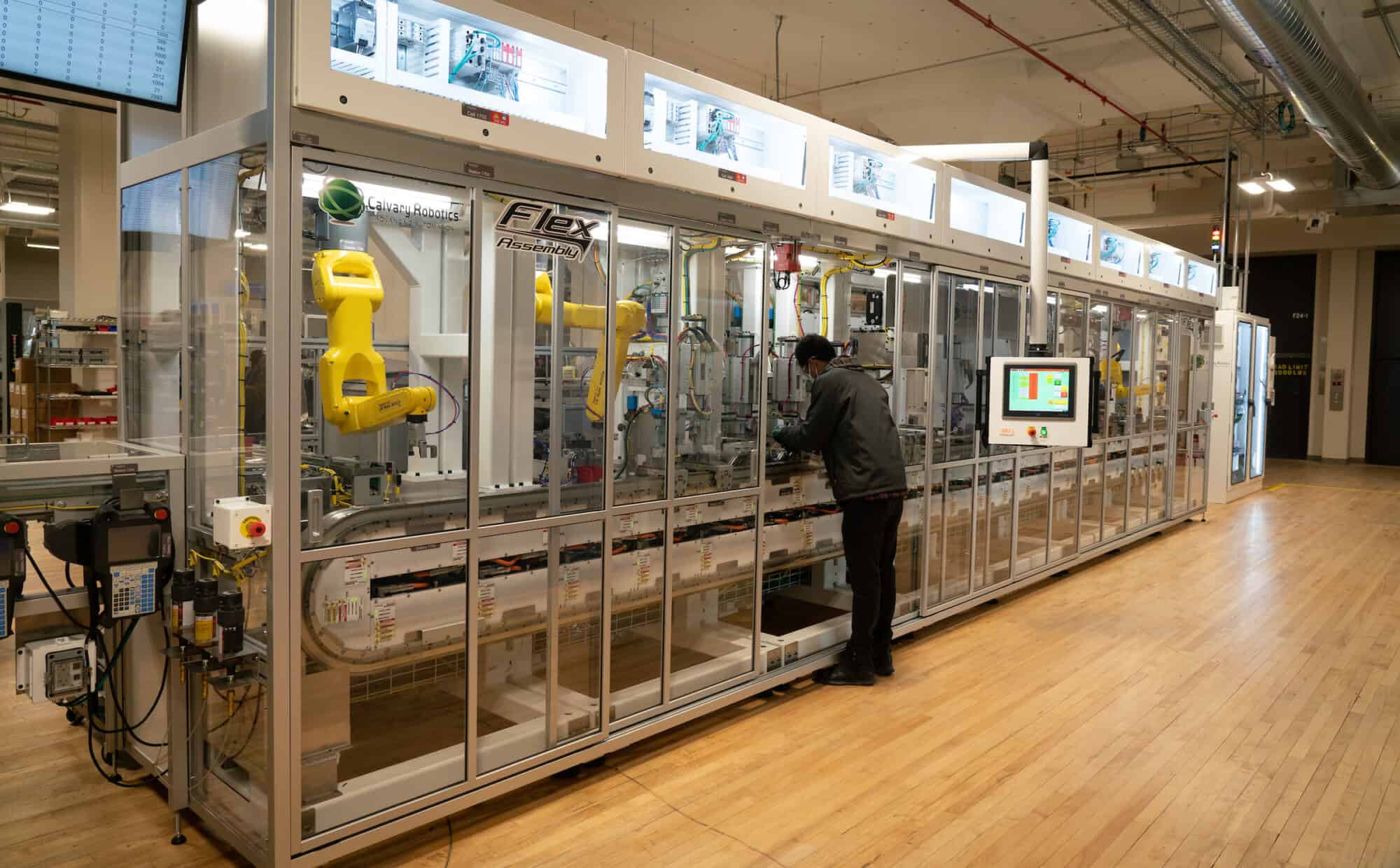
In late 2021, the Manufacturing Leadership Council launched the Manufacturing in 2030 Project, a comprehensive examination of the factors that will influence the industry leading up to the year 2030 and beyond. The latest milestone in this sweeping project is the release of The Next Phase of Digital Evolution.
This groundbreaking white paper examines the global megatrends like population, the economy, sustainability demands, and technology development – all of which will impact business decisions and are essential for manufacturing competitiveness.
Data’s Growing Role: Data is perhaps manufacturing’s most important asset, tracking everything from individual machine performance to the status of global supply chains. Developments in digital systems for factories, high-powered industrial networks and advanced communication technologies are giving rise to the ability to collect data.
Combined with a rise in analytics capabilities, manufacturers are now able to apply that data in powerful ways to improve processes, speed innovation, find new business opportunities and ultimately create conditions for greater competitiveness.
A Rising Middle Class: Population trends will influence where manufacturers build new factories, who they hire, the products that they make, organization for supply chains and who they are selling to.
Africa and Asia are projected to have the strongest population growth, and while traditional middle-class markets in the U.S., Europe and Japan are expected to grow at only modest rates, 88% of the next billion entrants into the middle class will be from Africa.
What’s to Come: Manufacturers will also need to consider their role in creating sustainable business practices and how they will overcome persistent workforce challenges. Institutional investors are pressuring businesses to significantly improve environmental practices, while the already yawning gap in skilled workers is expected to skyrocket to 2.1 million unfilled openings by 2030.
Technology could have a role in solving both of those issues. On the sustainability front, data can be key to monitoring emissions, utility consumption and waste, while also giving rise to new processes that improve on those metrics. For the workforce, data can empower workers to make more informed decisions, automation can eliminate repetitive tasks, and technologies like augmented and virtual reality can enhance training and upskilling.
To learn more about these and other insights, download the full white paper here.
POV: M4.0: There is No Looking Back
Manufacturing Leadership Journal content and MLC resources are exclusively available to MLC members. Please sign up for an account or log in to view this content.
